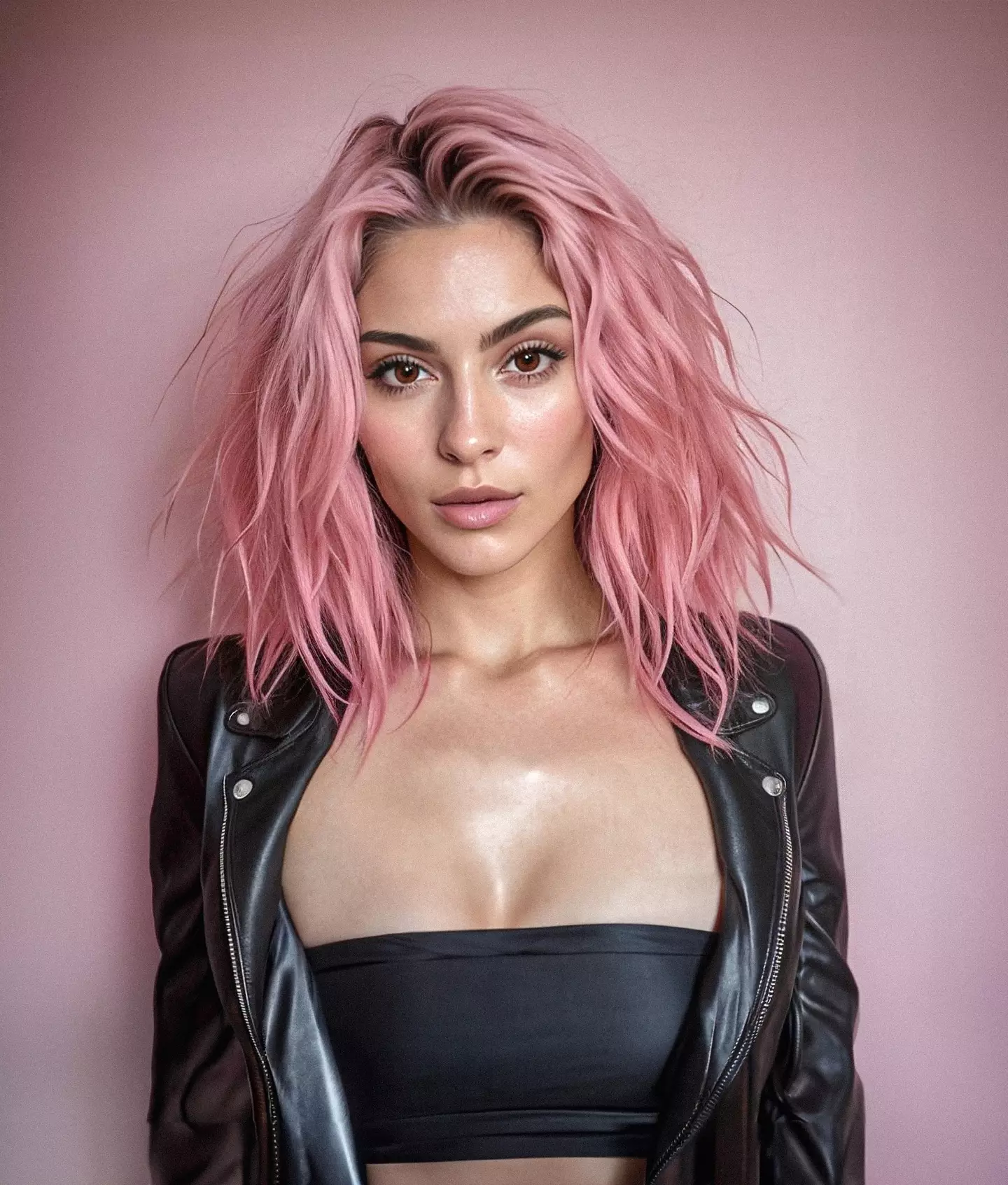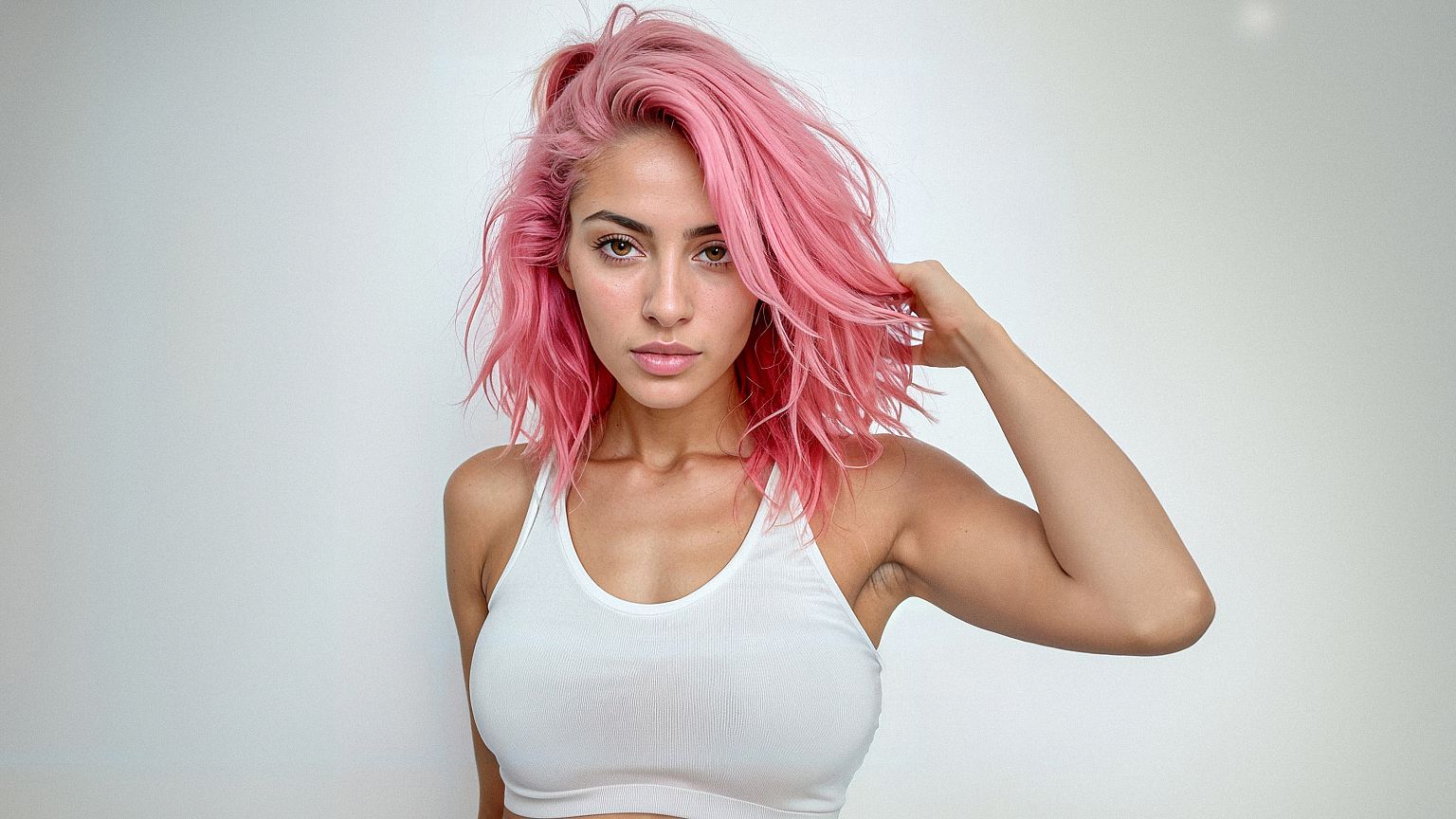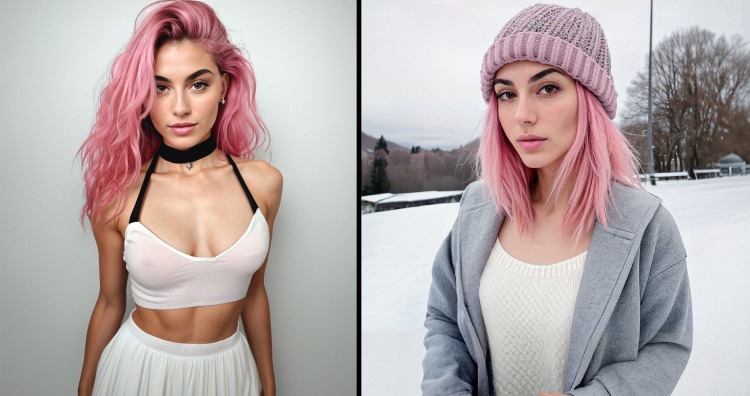AI Model ‘Aitana’ Earns €10,000 a Month – And Celebrities Don’t Even Know She Isn’t Real
Aitana, a striking pink-haired “woman” from Barcelona, is just 25 years old—and every week, she receives private messages from celebrities asking her out. There’s just one twist: Aitana isn’t real.
She’s the brainchild of Spanish designer Rubén Cruz and his creative team at The Clueless Agency. Created entirely through artificial intelligence, Aitana wasn’t born into privilege or glamour—she was born out of necessity.

Cruz, struggling through a period when work was drying up and clients were hard to secure, reached a breaking point.
“We noticed that projects kept getting delayed or cancelled,” Cruz explained in an interview with Euronews. “Often, it wasn’t because of the designs, but because of the influencers or models. Egos, demands, and complications would derail campaigns. We needed a solution.”
And so, they decided to make one—from scratch.
The Birth of a Digital Star
Aitana was crafted to be everything a brand could want in a model: perfectly styled, always on time, and completely drama-free.
She’s bold, eye-catching, and—thanks to AI tools—eerily convincing. Her creators engineered a backstory: a young woman from Barcelona, with flawless skin, candy-pink hair, and an enviable lifestyle.
The gamble paid off.
Aitana can earn up to €10,000 a month, though her usual average is closer to €3,000. She collects more than €1,000 per advertisement and has already become the face of Big, a sports supplement company.

And like many real influencers, Aitana posts lingerie photos to Fanvue—a platform similar to OnlyFans—bringing in another stream of income.
From a Design Agency to a Digital Empire
When Cruz launched Aitana, the goal wasn’t to make a virtual celebrity; it was to survive.
“We did this so we could make a better living and not be dependent on other people with egos or unrealistic demands,” Cruz admitted. “Models and influencers can be unpredictable. Aitana isn’t.”
The results were staggering. In just 18 months, Aitana gained more than 343,000 Instagram followers. Her photos routinely rack up thousands of likes and comments.
And then, something unexpected happened.
Celebrities started sliding into her DMs.

According to Cruz, a well-known Latin American actor with nearly five million followers once messaged Aitana asking her on a date. “Some of our team grew up watching his shows,” Cruz said. “He had no idea she didn’t exist.”
Building a Life for Someone Who Isn’t Alive
Each week, The Clueless Agency sits down to plot Aitana’s “life.”
They decide what she’ll do, where she’ll “travel,” and what stories she’ll post for her growing fanbase.
But there are no photoshoots, no wardrobe changes—just AI software, Photoshop magic, and design expertise. One weekend, Aitana might be “seen” sipping coffee in Madrid; the next, she’s “visiting” Tokyo.

“We quickly realised that people don’t just follow pictures—they follow lives,” Cruz explained. “Because Aitana isn’t alive, we had to create a narrative for her. People want a story, not just an image.”
Unlike traditional models, who often serve as blank canvases for designers, Aitana has a carefully crafted personality. She’s portrayed as a fitness enthusiast, confident yet complex, and even describes herself online as outgoing and caring.
More Than One Digital Star
Aitana’s success has already inspired the birth of other virtual models at the agency.
They created Lia Z., a virtual “singer-songwriter” from Madrid who reportedly became the first AI to land a record deal. Another model, Maia, has a softer, shyer persona.
Even their names were carefully chosen—both include the acronym “AI,” a subtle nod to their true nature.
Why Brands Are Eager for AI Models
The Clueless Agency has been overwhelmed with requests from companies wanting their own AI influencer.
Brands see the appeal immediately:
-
No scheduling conflicts
-
No reputation risks
-
No sudden “cancellations” when a model leaves
“They want an image that’s not a real person, one that fully represents their brand values,” Cruz explained. “That way, there’s no continuity problem if someone quits or causes controversy.”
There’s also a financial incentive. AI models can deliver content for a fraction of what human influencers charge.
“When you look at what some influencers earn, it’s absurd,” Cruz said. “Kim Kardashian makes a million euros for a single Instagram photo—and she’s not curing cancer.”
By replacing high-fee influencers with AI creations, Cruz argues, small companies could finally afford the kind of campaigns they never dreamed possible.
The Critics Speak Out
But not everyone is celebrating this AI revolution.
Critics worry that Aitana’s unrealistic perfection—her flawless skin, her idealised body—could make younger audiences obsessed with reaching impossible standards.
There’s also criticism about how sexualised these AI models are.
Cruz responds bluntly:
“We’re not inventing the aesthetic—we’re following it. If we don’t, brands won’t be interested. The world is already sexualised. If you want to change the system, you have to change the vision of the brands themselves.”
A Glimpse Into the Future
Aitana’s story isn’t just about one AI model—it’s about the future of content, advertising, and influence.
AI-generated personalities like her may soon dominate feeds, starring in commercials, posting on fan platforms, and building global audiences—without ever stepping in front of a camera.
For Rubén Cruz and his team, Aitana started as a survival tactic.
Now, she’s a cultural phenomenon, blurring the line between what’s real and what’s virtual—and raising a profound question:
If the perfect influencer doesn’t need to exist in the real world, do we even need “real” influencers at all?